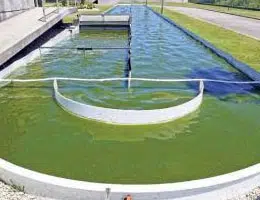 The Royal Spanish Academy ( RAE ), in its dictionary, defines an effluent as a fluid from an industrial facility . The term comes from the verb effluir , which refers to the escape of a gas or liquid to the outside.
The Royal Spanish Academy ( RAE ), in its dictionary, defines an effluent as a fluid from an industrial facility . The term comes from the verb effluir , which refers to the escape of a gas or liquid to the outside.
For example: "A polluting effluent reached the lake and caused massive poisoning of fish" , "To be sustainable, we have to opt for factories that do not generate effluents and that, therefore, are friendly to the environment" , " The national government invested ten million pesos to improve the treatment of sewage effluents in the riverside area .
Effluents constitute a problem for ecology because they are often polluting . That is why there are laws that establish how industries must treat or discharge them. When untreated effluent reaches waterways, serious environmental problems can occur that affect the health of people and animals.
In the field of hydrology , the water course that emerges from a river or a lake as a branch is called effluent. The course that, on the other hand, joins a river or lake is called a tributary .
Hydrology belongs to the group of Earth sciences , the natural disciplines that focus on the study of the morphology, structure , dynamics and evolution of our planet. The theme that stands out in this framework is water, as can be seen in its lexical component hydor , coming from Greek, which can be translated as "water."
The phenomena related to water that are of interest to hydrology are its distribution, its chemical, mechanical and physical properties, its occurrence and its circulation on the Earth's surface, in the atmosphere and in the oceans. In more precise terms, it focuses on the study of soil moisture, the balance of glaciers from the point of view of their masses, runoff (the current that is discharged when a channel, natural or artificial, or well a deposit).
Confluence is the place where these courses converge: those that leave (effluents) and those that arrive (tributaries). The effluents can be natural, such as those that arise in deltas; or artificial, created by humans to supply water to a population or for irrigation purposes. In the case of artificial effluents, they are usually canals or ditches .
Another way of understanding effluents is as liquid waste that is not easy to recycle or purify using methods such as biological or physical-chemical purification , among other traditional ones. The cause of this difficulty lies in the characteristics of their composition, which in turn result in a great risk if they are spilled by accident. To treat these effluents in the best possible way, therefore, there are specialized companies that have various distillation and evaporation technologies, created to concentrate the waste to very high levels.
 It is necessary to point out that in several cases companies choose to store and send said effluents to the so-called waste managers , something that entails an economic expense that could be avoided with treatment in the facilities themselves. As if this savings were not enough, purification produces by-products that can be sold to obtain extraordinary income.
It is necessary to point out that in several cases companies choose to store and send said effluents to the so-called waste managers , something that entails an economic expense that could be avoided with treatment in the facilities themselves. As if this savings were not enough, purification produces by-products that can be sold to obtain extraordinary income.
Among the most advanced and appropriate technologies for treating effluents are the following:
* crystallizers;
* vacuum evaporators;
* reverse osmosis ;
* nanofiltration, ultrafiltration and microfiltration;
* ion exchange resins;
* biological and physical-chemical purification plants;
* electrodeionization;
The origin of the effluents that can be treated with these technologies are various, and that is why experts must identify them in each case to know how to proceed. Some possibilities are: energy production plants; urban solid waste landfills ; industrial type activities; gas, oil and mining extraction plants.
